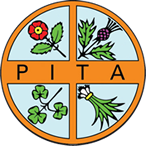19 Feb. 2024: Two Sides took a lead role in a prestigious print vs digital debate at Portcullis House.
Jonathan Tame, Managing Director of Two Sides, had a central role in a recent Parliamentary debate sponsored by the Independent Print Industries Association (IPIA). Held at Portcullis House, opposite the House of Parliament, this prestigious event featured two print experts and two digital debating the motion that “Printed paper is the preferred medium of record whilst also a sustainable marketing communications format”.
Alongside Jonathan in the print corner was Richard Pepper, founder of the greetings card company Funky Pigeon, while arguing the case for digital was John Booth, founder of sustainable IT consultancy Carbon3IT, and Emma Newman, Chief Revenue Officer EMEA of digital advertising firm PubMatic.
The Debate Begins
With Conservative Peer Baroness Sater presiding as Chair, the debate began with a show of hands in the room as to who agreed and disagreed with the motion. For this first count, 46 people were for the motion, while 24 were against – a strong start for paper. Then the debate began, with each speaker given an equal amount of time to make their case.
First up was Richard Pepper, who was firmly on the side of print. He spoke about the enhancement in education and information retention that print offers, citing the fact that many students prefer to learn using print books rather than digital media.
“When you read digitally, you only absorb around 500 words before becoming distracted,” he said. “Print offers a deeper learning experience.”
Following Richard, John Booth focused on the efficiency of digital media, as well as its ease of distribution. He backed up his argument with the fact that many sectors, from banking and legal to marketing and media, had converted the majority of their operations and record keeping to digital.
“All the advantages of print are available in digital media,” he said. “It has revolutionised many industries, offering real-time updates to ensure information is up-to-date and relevant.”
Two Sides Weighs In
Jonathan Tame then stood up to put forward the environmental case for print, using three common myths associated with paper production and use: that going paperless will save trees, paper is wasteful and goes to landfill, and paper production uses a lot of water.
Citing a series of facts that effectively dispel each myth, including European forests growing by an area equal to 1,500 football pitches every day, and paper having a 71% recycle rate, Jonathan moved on to the concerning environmental issues related to the increase in digital media.
“The environmental impact of our ever-increasing digital world can’t be ignored,” he said. “The ICT industry accounts for 5-9% of energy use globally, and it’s estimated it could increase to 14% of global emissions by 2050.”
As the final speaker, Emma Newman countered some of Jonathan’s environmental arguments by stating that most data centres run on renewable energy and digital media has no transport costs, thus increasing its sustainability. She then spoke about the wider picture, stating that digital media drives the economy, enabling businesses and charities to increase awareness and grow their organisations.
Real World Experience
“When a city gets burned, and governmental institutions get burned, there is no safe haven for printed copies [of documents]. Thank God, when people had to flee the country, that they didn’t have to take their passport, their diploma – they could have it on their phone, digitally. So for a medium of record, I’m definitely for digital.”
Despite this compelling contribution, the motion was carried in favour of print, with an increase in majority.
For more information about the IPIA, go to ipia.org.uk
